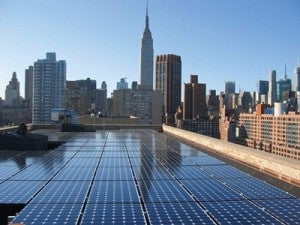 If you have ever worked in the service industry and dealt with a difficult customer (or even seen one in action), you are likely inclined to recall the oft-used adage, “the customer is always right.” Clichéd as that phrase may be, it is not without merit. Here at Environmental Defense Fund (EDF), we believe the same truism applies to how utilities approach providing electricity.
If you have ever worked in the service industry and dealt with a difficult customer (or even seen one in action), you are likely inclined to recall the oft-used adage, “the customer is always right.” Clichéd as that phrase may be, it is not without merit. Here at Environmental Defense Fund (EDF), we believe the same truism applies to how utilities approach providing electricity.
In a recent ruling issued in the Integrated Distributed Energy Resources (IDER) proceeding, California Public Utilities Commission (CPUC) Commissioner Michel Florio found, quite properly, that utility business models need to be evaluated in order to put more customer and third party-owned distributed energy resources, like rooftop solar and energy storage onto the grid. Currently, utilities receive a rate of return if they build infrastructure necessary to support our central power grid (like pipelines for our aging natural gas system). If clean, distributed energy sources make that infrastructure less essential, it could jeopardize the utilities’ revenue stream, thereby discouraging them from including these cost-effective energy resources in our power mix. Read More










 You have to give some credit to FirstEnergy. It does hire creative lawyers.
You have to give some credit to FirstEnergy. It does hire creative lawyers. When it comes to clean air and clean energy, Texas cities – and their encompassing counties – know what’s good for them.
When it comes to clean air and clean energy, Texas cities – and their encompassing counties – know what’s good for them. New York is preparing for a
New York is preparing for a  Last year solar power saw unprecedented
Last year solar power saw unprecedented  The Federal Energy Regulatory Commission (FERC) recently rejected Ohio-based utilities
The Federal Energy Regulatory Commission (FERC) recently rejected Ohio-based utilities